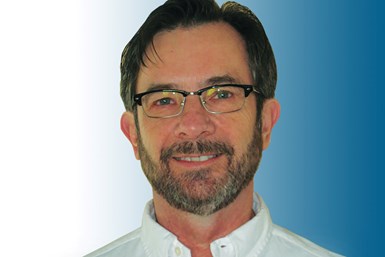Corrosion Resistance Testing for Powder Coating
Salt spray can be useful to help compare different pretreatment methods and coatings but it does not tell us much about the corrosion resistance of a part over time in the field. Powder coating expert Rodger Talbert offers insights into how to get a better idea of how to improve a part’s corrosion resistance in the real world.

Rodger Talbert has more than 30 years of experience in the powder coating industry.
Q: We have begun to take on some automotive components that fit under the dash, inside the car interior and under the hood. The appearance standards are not too hard for us to achieve but we are a little concerned about the corrosion requirements. Some of them are just 500 hours of neutral salt spray, but some are 1,000 hours and that may be more challenging. We are able to pass the salt spray test but we have had some field failures (rust). The rust occurs on edges usually but it can also occur in corners and sometimes on the flat areas of the part. We use a five-stage iron phosphate wash process. Some of the parts require a hybrid powder and a few have some UV requirements that we use a TGIC powder coating material to meet. Any suggestions on how we can better ensure corrosion resistance would be appreciated.
A: While salt spray has been used for many years by the automotive industry as a standard the salt spray results and field performance are not closely connected. Salt spray can be useful to help compare different pretreatment methods and coatings but it does not tell us much about the corrosion resistance of a part over time in the field.
Using salt spray to qualify a process is ok if you can verify it regularly to confirm the reliability of the process. If you pass a certain level of salt spray one day and do not pass on another day, there may be something that is not working properly and needs to be brought back into a safe range. In testing, remember to always use a control panel from a test facility to ensure the problem is not related to your steel material. A polished ACT or Q panel should always be part of your testing. Run at least three panels or parts to establish reliability.
Iron phosphate does not add much to the corrosion resistance. I would suggest you consider a zirconium oxide or zinc phosphate to improve performance. The zirconium oxide will improve corrosion resistance and does not have the environmental challenges of a zinc phosphate. Before you do the chemical treatment, be sure you have clean weld areas and round the sharp edges if you can. The chemical pretreatment will not remove weld smut and you need better edge coverage based on your description. You can grind or blast those inorganic soils and you will get better performance. You should also consider a powder primer coat. The primer will add a lot of corrosion protection. It will also help to round those edges and give you more coating at critical locations. A double coat of powder is always superior for edge coverage and corrosion protection.
For reliable testing of corrosion, you should consider a cyclic corrosion test. Putting a part through wet/dry cycles will provide a better correlation to exposure in the real world. Different specifications exist or can be created as to the specific cycles to use for a given industrial application. If you are doing automotive work, your customer can provide you with the right specification. SAE J156315 is a good source for guidance on cyclic testing. Do the testing routinely and use the results for the development of reliable control ranges for your pretreatment process and application.
Related Content
SUR/FIN 2023: Capsules from the Technical Sessions I: Emerging Technologies
SUR/FIN 2023 in Cleveland this past June was a resounding success. Due to the efforts of the Technical Activities Committee, ably led by Bill Nebiolo this year, an outstanding program of technical presentations was offered. What follows are summaries of selected presentations from the Emerging Technologies sessions. Additional coverage will be provided in this space in the coming months. The full report can be accessed and printed at short.pfonline.com/NASF23Aug1.
Read MoreTitrations: To Automate or Not to Automate?
What considerations should you keep in mind for automatic titrations? Conor McAnespie of Hanna Instruments discusses the benefits of auto titrators.
Read MorePowder Coating Overcomes Post Forming
Six Sigma methodology, open communication, and collaboration produce results for leading boat manufacturer.
Read MoreMastering Uniformity Through Surface Prep Standardization
By standardizing surface preparation processes and adopting surface energy measurement, a company can achieve uniformity, quality and cost reduction.
Read MoreRead Next
A ‘Clean’ Agenda Offers Unique Presentations in Chicago
The 2024 Parts Cleaning Conference, co-located with the International Manufacturing Technology Show, includes presentations by several speakers who are new to the conference and topics that have not been covered in past editions of this event.
Read MoreDelivering Increased Benefits to Greenhouse Films
Baystar's Borstar technology is helping customers deliver better, more reliable production methods to greenhouse agriculture.
Read MoreEducation Bringing Cleaning to Machining
Debuting new speakers and cleaning technology content during this half-day workshop co-located with IMTS 2024.
Read More






















